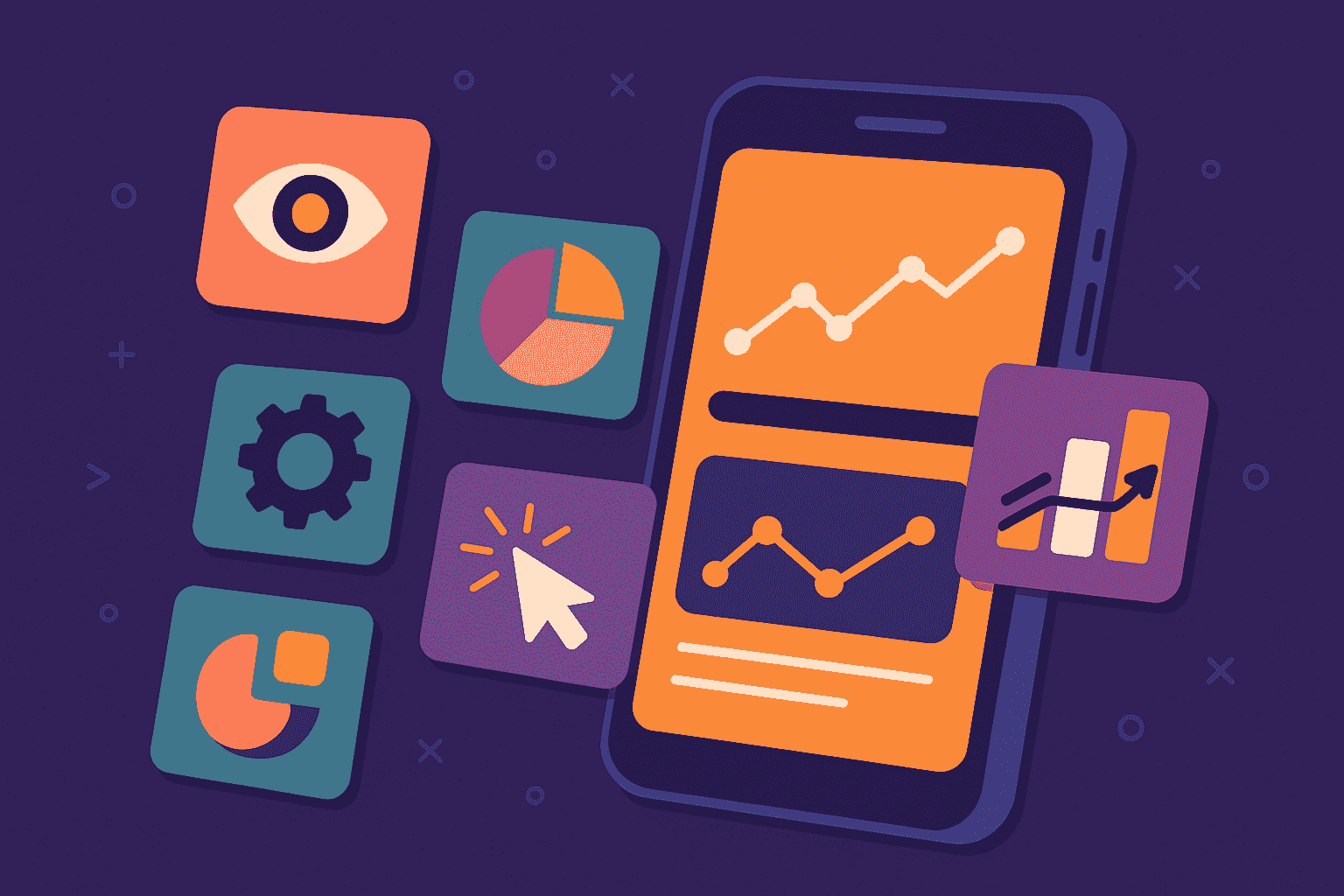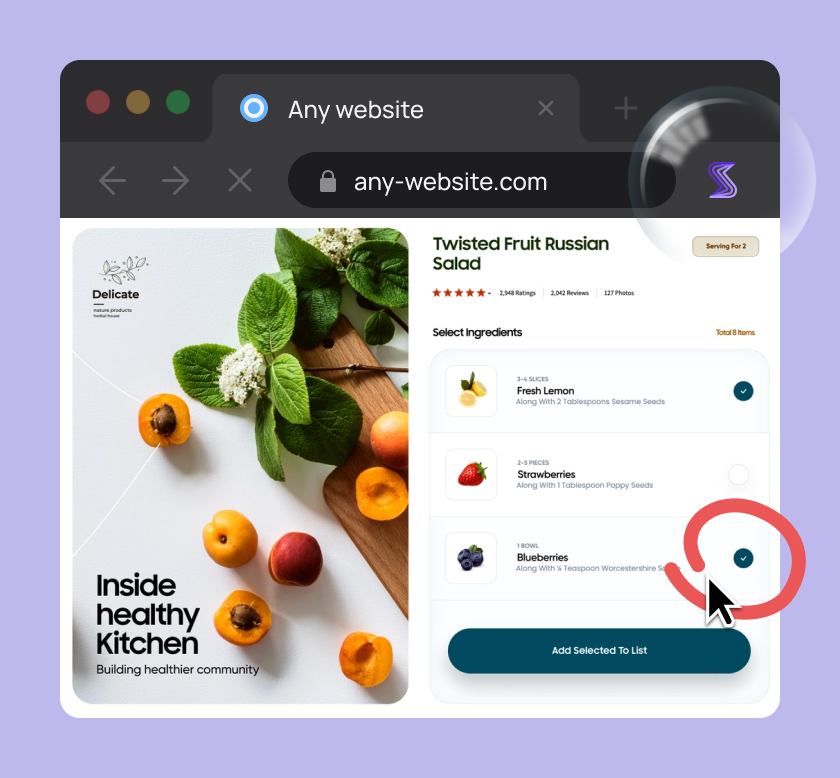
Software Development Kits, or SDKs, are often seen as the domain of developers.
And while they certainly make developers’ lives easier, have you ever considered how helpful they can be for product managers?
Well, in this article, we’ll look at this often-overlooked aspect of SDKs.
So, whether you’re a dev team lead trying to convince your product manager of the value of integrating a particular SDK or you’re a PM yourself, read on.
Let’s cover six ways SDKs can help product managers deliver great products.
Table of Contents
Faster development
The very nature of SDKs makes them excellent tools for boosting efficiency in the development process.
As Ray Gardener, a development consultant, explains on Quora, SDKs help developers avoid the tedious process of app modification and recompilation every time a new feature is added.
Instead, with SDKs, developers can integrate pre-built and thoroughly tested functionalities and components directly into their applications.
This allows new features and updates to be rolled out quickly and with fewer resources, ultimately allowing your product to consistently stay ahead of the competition.
Of course, Gardener adds that you get these efficiency gains only if you have a good SDK.
High-quality SDKs are developed with rigorous quality control and include all the necessary components illustrated below.

Each of these elements directly contributes to faster development.
For instance, clear code samples can guide developers on how to use the SDK effectively, minimizing the need for extensive research and experimentation.
There are even pre-built libraries offering ready-made solutions for common tasks, saving developers valuable time and effort.
Plus, some SDKs go even further.
For example, Stripe’s iOS SDK includes a complete example app called PaymentSheet, showcasing how the SDK’s various features can be integrated into a real-world application.

This means developers can learn by example, directly from the vendor, rather than looking through documentation and doing everything through trial and error.
But, even without such example apps, the comprehensive components of a well-designed SDK enable significantly more efficient development compared to building everything from scratch.
Consistent product quality
Now, you might think that the efficiency gains from using SDKs come at the expense of product quality.
This is a valid concern.
After all, you’re incorporating pre-built components that are not specifically designed for your app.
However, top SDKs are rigorously tested and adhere to established standards, ensuring reliability and performance across different platforms and devices.
Furthermore, they often provide pre-built components that handle complex tasks like UI design and security, freeing up developers to focus on other aspects of the app.
Let’s look at the example of Material Design 3 Components (MDC).

MDC provides a set of pre-designed UI components, such as buttons, text fields, and navigation elements, that conform to Material Design’s guidelines.
Once implemented, the components adapt seamlessly to various app versions and device screen sizes.
Implementing these components is standardized through the SDK, ensuring a consistent user experience regardless of the specific Android device.

Get unreal data to fix real issues in your app & web.
Standardization is key for maintaining a cohesive and polished app appearance and behavior.
This is especially crucial for Android development due to the wide range of devices in use.
As illustrated below, not all Android devices run the latest OS version.

In fact, as you can see from the pie chart, the distribution is quite fragmented.
Developing an app for a single Android OS version without an SDK offers no guarantee of optimal performance on other versions.
The alternative—manually tweaking an app for compatibility across multiple versions—can be time-consuming and resource-intensive.
This challenge is even more pronounced when ensuring cross-platform quality, such as between Android and iOS devices and desktop OSs.
In this scenario, SDKs like Flutter come into play.
Flutter allows developers to build natively compiled applications for mobile, web, and desktop from a single codebase.

Flutter’s SDK helps maintain consistent quality by providing a unified framework for UI development, ensuring a similar look and feel across different platforms.
SDKs like these are essential for modern apps.
After all, users expect an app to be available on multiple platforms while looking and functioning the same way.
So, with these tools, the development process is streamlined, allowing product managers to focus on features and functionality rather than platform-specific inconsistencies.
Faster iterations
As we’ve already explained, SDKs enable faster overall development.
This, in turn, translates to faster iteration cycles.
Fast iterations are crucial in today’s dynamic market, allowing businesses to respond quickly to user feedback, adapt to changing trends, and maintain a competitive edge.
Moreover, manual development simply doesn’t cut it in this fast-paced environment.
Building everything from scratch consumes valuable time and resources, especially when compared to using SDKs.
To illustrate this point, look at the following table comparing development with and without using SDKs.
| Manual | Using SDKs | |
| Development Speed | Slower, requires building from scratch | Faster, pre-built functions reduce coding time |
| Feature Implementation | Time-consuming, extensive testing needed | Quick integration of pre-tested features |
| Bug Fixing & Maintenance | High effort, debugging from the core level | Easier, SDK providers handle updates and fixes |
| Cross-Platform Support | Requires separate code for each platform | Many SDKs offer multi-platform support |
| Scalability | Complex, requires custom optimizations | Streamlined with built-in best practices |
| Resource Allocation | High developer workload | Frees developers for core product innovation |
While manual coding can certainly offer the advantage of creating highly customized features, it comes at the cost of:
- Reduced efficiency
- Increased workloads
- Limitations on scalability and app growth
Let’s illustrate this with an example.
Suppose you want to add video streaming to your app.
Doing this manually requires extensive expertise in multimedia processing, video encoding and decoding, and network management.
For many development teams, this would be impractical or excessively time-consuming.
However, with an SDK like WebRTC, these complex functionalities can be integrated quickly and efficiently.

WebRTC is an open-source project that provides real-time communication capabilities, including video and audio streaming, directly within web browsers and mobile applications.
In our scenario, using this SDK would significantly reduce development time and effort, allowing for faster implementation of the video streaming feature.
It’s important to note that integrating new features, even with SDKs, requires thorough implementation and testing to prevent issues.
Even so, the opportunities for rapid app updates and iterations that SDKs provide are unmatched by other methods.
Ultimately, this means releasing new features quickly, responding to user needs, and continuously improving your product.
Seamless platform integration
Closely related to this topic is how SDKs facilitate integration with different platforms.
While many features can be developed internally when building an app, some are impractical or nearly impossible to implement without an SDK.
As software engineer Remya Mohanan writes for Spiceworks, these features often include crucial security, communication, and payment functionalities.

She explains that mistakes in developing these features can be costly, leading to serious security vulnerabilities or significant project delays.
For example, imagine building an app authentication module from scratch and inadvertently introducing a vulnerability that allows unauthorized access to user accounts.
This could result in:
- Data breaches
- Identity theft
- Reputational damage
- Potential legal problems
In modern development, these complications can often be avoided by integrating with established third-party platforms with proven security and reliability track records.
And, for some app components, using SDKs is a seamless way to integrate with powerful platforms that offer features you can’t find anywhere else.
The image below shows some feature categories like these and some corresponding SDKs.

For instance, integrating with an advertising platform like Google AdMob is essential for monetizing an app.
Or, consider payment platforms like Stripe, which simplify the complex process of accepting payments securely.
Getting these platforms’ proprietary features typically requires integrating with their APIs, and their SDKs can streamline this process and reduce development effort.
Overall, SDKs simplify platform integration by providing pre-built solutions for complex functionalities like security, communication, and payments.
This reduces the risk of costly errors and allows developers to leverage the power of established and reliable platforms.
Better developer adoption
While SDKs offer significant potential for product growth, it’s important to consider whether developers will readily adopt and utilize these tools.
Lucky for us, well-built SDKs are specifically designed to simplify developers’ lives.
They do this by reducing the amount of coding and development time by offering pre-built functionalities that devs can implement through simple workflows.
Plus, ease of use is often a core principle of SDK design.
In fact, some SDK documentation explicitly emphasizes this developer-centric approach.
For example, consider Azure’s SDK guidelines, which are shown below.

Azure explicitly states that their SDK’s primary purpose is to enhance developer productivity when using their services.
They also prioritize SDK design principles that ensure a natural and intuitive developer experience, promoting seamless integration and reducing the learning curve.
A closely related point is that many popular SDKs support multiple programming languages, catering to developers’ diverse preferences and existing codebases.
The AWS SDK, for instance, provides detailed code examples in its documentation for over eleven different languages.

This multi-language support is essential because it allows developers to use the SDK with their preferred language, minimizing context switching and accelerating the integration process.
It eliminates the need for devs to navigate a new language or rewrite existing code, which in turn saves valuable time and resources for everyone.
To put it simply—quality SDKs prioritize the developer experience.
And when developers are happy, they’re more likely to use SDKs and leverage their full potential, which means better and faster product development overall.

Capture, Annotate & Share in Seconds with our Free Chrome Extension!
Stronger data insights
Many SDKs include built-in tracking and analytics capabilities, empowering product managers to make data-driven decisions.
These SDKs often provide insights into user behavior, app performance, and other key metrics.
Here’s a very concise list of some notable examples:
- Firebase Analytics for user engagement and conversions
- AppsFlyer for marketing analytics
- Mixpanel for product analytics and user behavior tracking
- New Relic for app performance monitoring
- Shake for in-app bug and crash reporting
Let’s take Firebase Analytics, for instance.
This platform provides a comprehensive suite of analytics tools to track user engagement, conversions, and other crucial metrics.
For example, suppose you launch a new app feature and want to assess its effectiveness.
You can use Firebase’s comparison feature to analyze how the change impacted various user segments, such as all users, top purchasers, and highly engaged users.

For example, you could discover that your new feature significantly increased engagement among already engaged users but had little impact on new users.
As a result, you could make data-driven decisions about improving the feature to maximize its impact on all users.
Or consider Shake’s SDK, which can provide you with information for managing app bugs, crashes, and user feedback.
Shake streamlines the entire bug reporting process, giving developers all the data they need to debug apps efficiently.
But it’s extremely useful for PMs as well, providing key insights into what issues need to be prioritized to make sure users get the best experience possible.
This short video explains it nicely:
Shake also offers additional analytics, tracking metrics like the volume of incoming feedback and the number of app users, along with a simplified system for ticket tracking and management.

So, if a surge of user feedback arrives, you’ll be readily equipped to identify and address the underlying issue.
Or, during quieter periods, exploring user suggestions and improvement ideas can provide valuable insights for future development.
This is just a glimpse into the potential of SDK analytics, but it effectively illustrates the valuable insights they can offer.
By leveraging the data provided by these SDKs, product managers can better understand user behavior and identify areas for app improvement.
Conclusion
As you can see, SDKs aren’t just for developers and engineers—they’re valuable assets for product managers as well.
In this article, we’ve explored how SDKs can help you launch a higher-quality software product more quickly, seamlessly integrate new features, and provide crucial data insights.
Hopefully, all these benefits shed light on the often-untapped potential of SDKs from a product manager’s perspective.
Now that you understand how SDKs can be leveraged, explore some of the ones we mentioned in this article—you never know which one will help revamp your entire operations.






